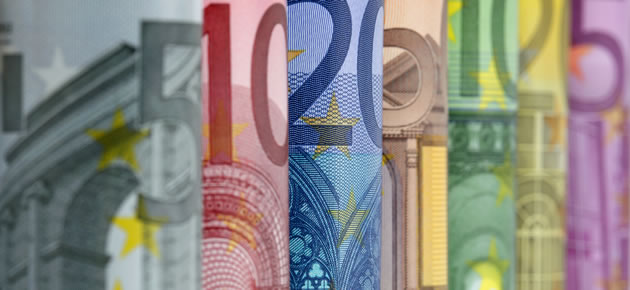- ‘Brexit’ worries continued to drag on Pound – Investors wary after telephone poll put ‘Leave’ ahead
- Euro strengthened despite poor Eurozone Manufacturing PMIs – Weakness of US Dollar boosted single currency
- Markets muted after ECB policy decision – Wary comments initially weigh on Euro
- US Payrolls predicted to impact Euro demand – Softer employment could dent chances of imminent Fed rate hike
Euro (EUR) Softened ahead of Eurozone Services PMIs and US Payrolls
Following the downside surprise of the recent Eurozone Manufacturing PMIs investor hopes are not especially high for the corresponding Services measures. As a result the Euro to Pound Sterling (EUR/GBP) exchange rate was on a downtrend around 0.7726 on Friday morning.
The Euro consolidated declines following the release of the Eurozone’s Retail Sales report for April.
Retail Sales were shown to have stagnated on the month and risen by 1.4% on the year, defying respective forecasts of 0.4% and 2.1%.
According to Eurostat: ‘The stable volume of retail trade in the euro area in April 2016, compared with March 2016, is due to a rise of 0.5% for “Food, drinks and tobacco”, while non-food products remained stable and automotive fuel decreased by 0.1%.’
However, the Euro pushed back against the Pound as trading continued, leaving the EUR/GBP exchange rate up 0.3% on the day’s opening levels.
(Previously updated 16:52 02/06/16)
EUR/GBP Declines as ECB Hints it Could Expand Easing
The Euro to Pound Sterling (EUR/GBP) exchange rate failed to maintain it’s earlier strength following the European Central Bank’s (ECB) interest rate decision.
While the central bank took no action, it was hinted that it is prepared to expand stimulus if it proves necessary.
The cautious rhetoric saw the EUR/GBP exchange rate lose 0.3% to trend in the region of 0.7738.
(Previously updated at 10:30 am 02/06/2016)
Reduced Fed Hike Speculation Benefitted Euro (EUR) Exchange Rate
While the Eurozone economy continued to show signs of weakness on Wednesday, this failed to particularly weigh on demand for the Euro (EUR). The latest raft of domestic Manufacturing PMIs proved generally disappointing, with many of the member nations experiencing a downturn in sector growth. Although the contraction in the French manufacturing sector eased somewhat in May the overall Eurozone measure slowed to its lowest point since February, suggesting a generally more muted outlook.
Nevertheless, increased scepticism over the likelihood of the Federal Open Market Committee (FOMC) raising interest rates in June helped to bolster the appeal of the single currency. Weaker signals from the US economy saw the US Dollar (USD) weaken across the board, boosting demand for the Euro in response.
Confidence in the Pound (GBP), on the other hand, saw a sharp decline after the latest ICM telephone poll suggested that the ‘Leave’ campaign was ahead of ‘Remain’. This prompted a rapid resurgence in ‘Brexit’-based uncertainty, leading investors to move away from the softened currency. Although the UK Manufacturing PMI offered some encouragement, rising from 49.4 to 50.1 to suggest that slowdown pressures were not quite as pronounced as feared, this was not enough to shore up sentiment. A warning from the Organisation of Economic Co-operation and Development (OECD) over the potential negative impact of a vote to leave on the domestic economy also dampened demand.
Euro (EUR) Maintained Bullishness ahead of ECB Policy Meeting
With markets expecting to see no change in policy at the latest European Central Bank (ECB) policy meeting, the Euro remained on stronger form on Thursday morning. Given recent commentary from policymakers, it seems that the central bank is in ‘wait and see’ mood at this juncture, wanting to assess the impact of the raft of easing measures introduced in March before adjusting anything further. As investors remain less than convinced by the ability of the ECB to boost domestic inflationary pressure, however, even a more dovish tone from President Mario Draghi seems unlikely to dent the strength of the common currency.
As Christopher Duval-Kieffer, Research Analyst at Nomura, noted:
‘Market participants have low expectations about changes in the ECB’s monetary stance at the forthcoming ECB meeting held in Vienna on 2 June. One obvious reason is that the new measures decided at the meeting on 10 March have not been implemented yet and the ECB will of course want to assess the impact of these new measures – lower short-term rates, an increase and broadening of the asset purchase programme and targeted long-term refinancing operations.’
A weaker-than-expected UK Construction PMI for May added downside pressure to the Pound, meanwhile, as the measure dropped from 52 to 51.2. This underlined growing concerns over the outlook of the domestic economy, indicating continued slowness amid ongoing referendum uncertainty.
EUR/GBP Exchange Rate Forecast: US Jobs Data to Provoke Euro Volatility
Friday’s UK Services PMI is expected to cause greater volatility for the Pound, given that the service sector comprises a significant proportion of the domestic economy. Should services fail to grow as anticipated in May this is likely to lead to a sharp decline in the appeal of the Pound, with a weaker reading boding ill for the UK’s wider economic health. A stronger showing, however, would offer greater encouragement to investors and could see the Euro to Pound Sterling (EUR/GBP) exchange rate retreat ahead of the weekend.
While Eurozone Retail Sales are forecast to hold steady on the year at 2.1% the primary influence on the Euro on Friday will be the latest US jobs data. The latest Non-Farm Payrolls report could put an end to speculation of a June Fed rate hike should jobs or wage growth prove sufficiently disappointing. If the report is found to be bullish, however, the increased odds of an imminent interest rate move from the Fed are likely to weigh heavily on the single currency.
Current EUR, GBP Exchange Rates
At the time of writing, the Euro to Pound Sterling (EUR/GBP) exchange rate was trending higher around 0.7765, while the Pound Sterling to Euro (GBP/EUR) pairing was on a downtrend in the region of 1.2877.



